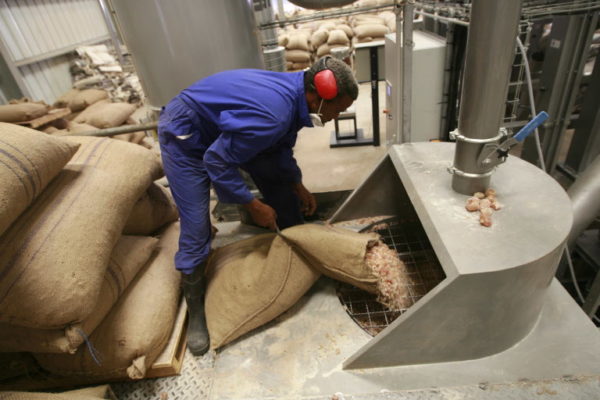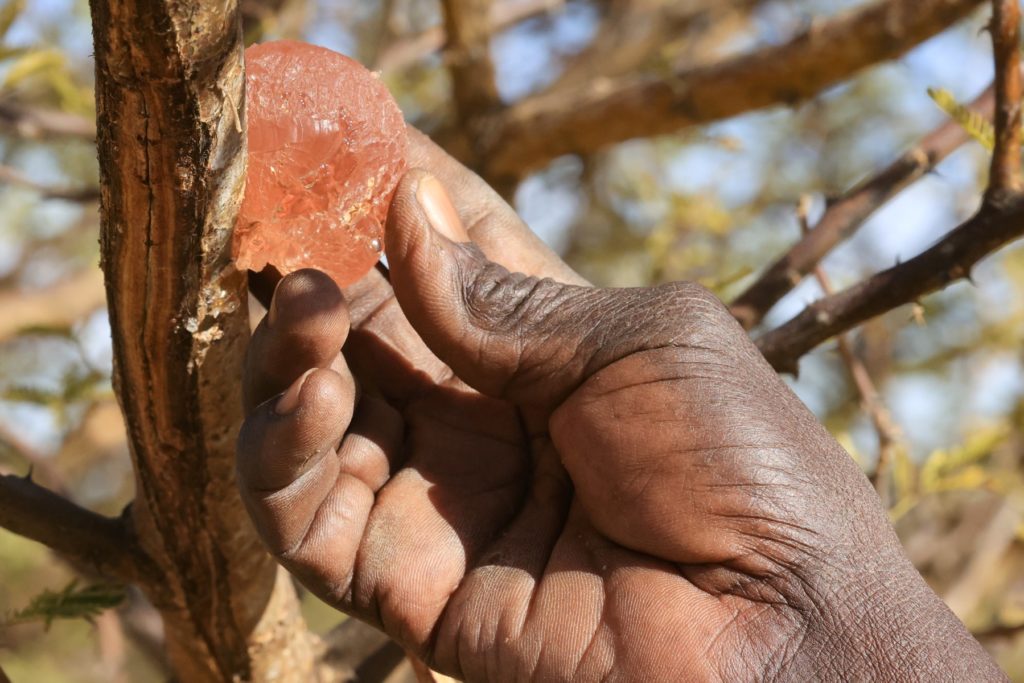São Paulo – What is gum arabic? Where is it from? What is it used for? You’ve probably read its name on the ingredient list of some industrialized food or beverage. ANBA interviewed Sudan’s chargé d’affaires to Brasília, Mohammed Elrashed Sidahmed Mohammed, and the Hydrocolloids and Systems manager of ingredient firm Vogler, Daniel Zóia, to explain what the gum is and what it is used for. Sudan is the world’s largest gum arabic producer.
The product, also known as gum acacia, is the resin exuded from the trunks and branches of the Senegal Acacia and the Seyal Acacia trees. Mohammed said they are called golden tears or blood tears of the trees, a sap that hardens to become the raw gum arabic. An Acacia tree starts producing the gum around five years after it’s planted and keeps producing it for 10 years.

Approximately 60% of the world’s gum arabic is harvested in Sudan, Mohammed said. It doesn’t exist anywhere in the world but in the so-called Gum Belt, the region of arid savannah that also encompasses Mauritania, Senegal, Eritrea, Somalia, Kenya and Tanzania, and in smaller amounts in South Asia and the Arabian Peninsula. Leading exporters besides Sudan are Chad, Nigeria, Senegal and Ethiopia.
“Sudan harvested approximately 80% of the world’s gum arabic, but this has declined to some 60% due to smuggling at the borders. Sudanese harvesters take the gum to neighboring countries like Nigeria, Senegal and Eritrea to earn more for it,” Mohamed said. Around one fifth of Sudan’s territory is covered by acacia plantations, an area of 520,000 squared kilometers.
The diplomat said that all gum producing countries have faced civil war and political and economic instability, which affects both the gum harvesting and its international prices. “A new government will be structured out in the following months and a new prime minister will be nominated, so we hope to get more stability in the country,” he said.
Raw gum exports from Sudan usually go to companies in France and Germany, which process and resell the powdered gum arabic across the world. According to information from the United Nations Conference on Trade and Development (UNCTAD), France alone exports around two thirds of all the processed gum arabic. Nexira, a French manufacturer of natural ingredients for the food industry, accounts for around 50% of the global market of processed gum arabic products.

The gum is primarily used in the food, beverage and medicine industries. “According to recent studies, it’ll be successfully used in natural cosmetics, too,” Mohammed said. The gum arabic contains fibers, which helps decrease cholesterol and lose weight, and improves immunity, the diplomat said.
Last year, Sudan produced approximately 500,00 tonnes of gum arabic. According to the chargé d’affaires, the gum-producing Acacia trees help conservate the region’s biome. “If we improve our harvest, more people will plant, and so we’ll preserve the environment and reduce desertification,” he said. Gum accounts for 15% of Sudan’s exports. Other exported goods are gold, cotton, citrus and foods, Mohammed said.
The diplomat suggested an exchange with Brazil to broaden the studies on gum arabic and how to make it a more value-added good. “We need more investment in the sector to boost and stimulate the direct trade of gum between Brazil and other countries,” he said.
Uses
According to hydrocolloid (gum) expert Daniel Zóia, the industry uses gums based on the sap of trees like the arabic as well as corn (corn glucose), seeds (guar gum) and algae (agar agar).
“The gum arabic is divided into two categories, Seyal and Senegal. The main uses of the Seyal gum are as a source of fibers in natural products ; it’s also used to dry cereal bars and keep it from getting sticky; to dry powdered flavors in the industry; and it’s fourth application is for dragées, to encapsulate a candy or chocolate like an M&M for instance (gum and coloring),” Zóia said. The Seyal gum arabic, he says, can be substituted by modified starch.

The leading use of gum exuded by the Senegal Acacia tree is as an emulsifier for liquid flavors to be used in beverages like Coke. “A flavor can be part oily and part aqueous, and for mixing water and oil the Senegal arabic gum is used to stabilize this liquid flavor as an emulsifier,” he said. All sorts of soft drinks, flavored drinks, industrialized juices, and soybean-based beverages use the Senegal gum arabic.
A substitute for the gum in this case can be modified starch or special starches. “Gum and starch are both odorless, so the substitution won’t interfere in the end product if the right doses are used. And starch comes from a renewable source,” he said.
The most used gum in Brazil’s food industry, according to Zóia, is by far the starch. “Then comes gelatin, which is primarily made from ox leather, an animal source; and third comes the imported guar gum and xanthan gum, followed by the others,” he said.
Zóia said now it’s hard to import the Syeal gum arabic. “We buy it from a German player, and my supplier said the political crisis in the region is still ongoing, so the product is lacking, due to harvest issues, and things has no prospect to get back to normal,” he said. Vogler, the company he works at, has a portfolio of 730 ingredients for the food industry.
Translated by Guilherme Miranda




